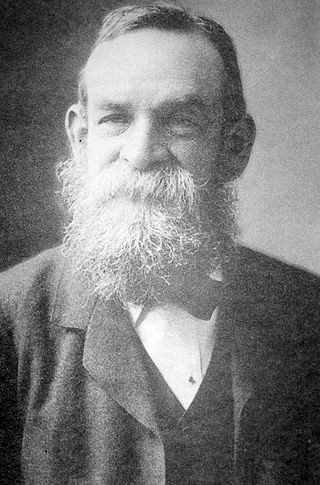
Entomology is the branch of zoology that focuses on insects. Those who study entomology are known as entomologists. In the past, the term insect was less specific, and historically the definition of entomology would also include the study of animals in other arthropod groups, such as arachnids, myriapods, and crustaceans. The field is also referred to as insectology in American English, while in British English insectology implies the study of the relationships between insects and humans.

John Obadiah Westwood was an English entomologist and archaeologist also noted for his artistic talents. He published several illustrated works on insects and antiquities. He was among the first entomologists with an academic position at Oxford University. He was a natural theologian, staunchly anti-Darwinian, and sometimes adopted a quinarian viewpoint. Although he never travelled widely, he described species from around the world on the basis of specimens, especially of the larger, curious, and colourful species, obtained by naturalists and collectors in England.

James Francis Stephens was an English entomologist and naturalist. He is known for his 12 volume Illustrations of British Entomology (1846) and the Manual of British Beetles (1839).

George Robert Waterhouse was an English naturalist. He was a keeper at the department of geology and later curator of the Zoological Society of London's museum.

William Kirby was an English entomologist, an original member of the Linnean Society and a Fellow of the Royal Society, as well as a country rector, so that he was an eminent example of the "parson-naturalist". The four-volume Introduction to Entomology, co-written with William Spence, was widely influential.

Frederick Smith was a British entomologist who worked at the zoology department of the British Museum from 1849, specialising in the Hymenoptera.

Adrian Hardy Haworth was an English entomologist, botanist and carcinologist.

Henry Tibbats Stainton was an English entomologist. He served as an editor for two popular entomology periodicals of his period, The Entomologist's Annual and The Entomologist's Weekly Intelligencer.

John Curtis was an English entomologist and illustrator.

Alexander Henry Haliday was an Irish entomologist. He is primarily known for his work on Hymenoptera, Diptera, and Thysanoptera, but worked on all insect orders and on many aspects of entomology.

Robert Templeton was a naturalist, artist, and entomologist, and was born at Cranmore House, Belfast, Ireland.

William Forsell Kirby was an English entomologist and folklorist. He specialized in the study of the stick insects, describing nearly 70 species and 22 genera. His collected filled 120 cabinets and claimed that on reorganization, it would need 500 drawers. The stick insect Phobaeticus kirbyi described from Borneo and named by Brunner in 1907 after Kirby is one of the largest stick insects in the world.

John William Douglas was an English entomologist, chiefly interested in microlepidoptera. He was popularly known as "Jolly" Douglas for his ability to produce jocular doggerel in the style of Longfellow's Hiawatha.
Entomology, the study of insects, progressed between 1800 and 1850, with the publication of important texts, definition of new orders such as Aphaniptera and Strepsiptera, and the shift to specialization. The following timeline indicates significant events in entomology in this time period.

Frederick William Hope was an English clergyman, naturalist, collector, and entomologist, who founded a professorship at the University of Oxford to which he gave his entire collections of insects in 1849. He described numerous species and was a founder of the Entomological Society of London in 1833 along with John Obadiah Westwood.

The Zoologist was a monthly natural history magazine established in 1843 by Edward Newman and published in London. Newman acted as editor-in-chief until his death in 1876, when he was succeeded, first by James Edmund Harting (1876–1896), and later by William Lucas Distant (1897–1916).

Edward Ernest Green was a Ceylon-born English mycologist and entomologist who specialised in the scale-insects, Coccidae. An accomplished artist, and lithographer, he illustrated the five volume Coccidae of Ceylon.
Joseph William Dunning was an English entomologist who specialised in Lepidoptera.

The Entomological Magazine was a publication devoted to entomology.

Frank H. Hennemann is a German entomologist and taxonomist who works in the field of biodiversity research on the systematics and biogeography of stick insects (Phasmatodea).




















